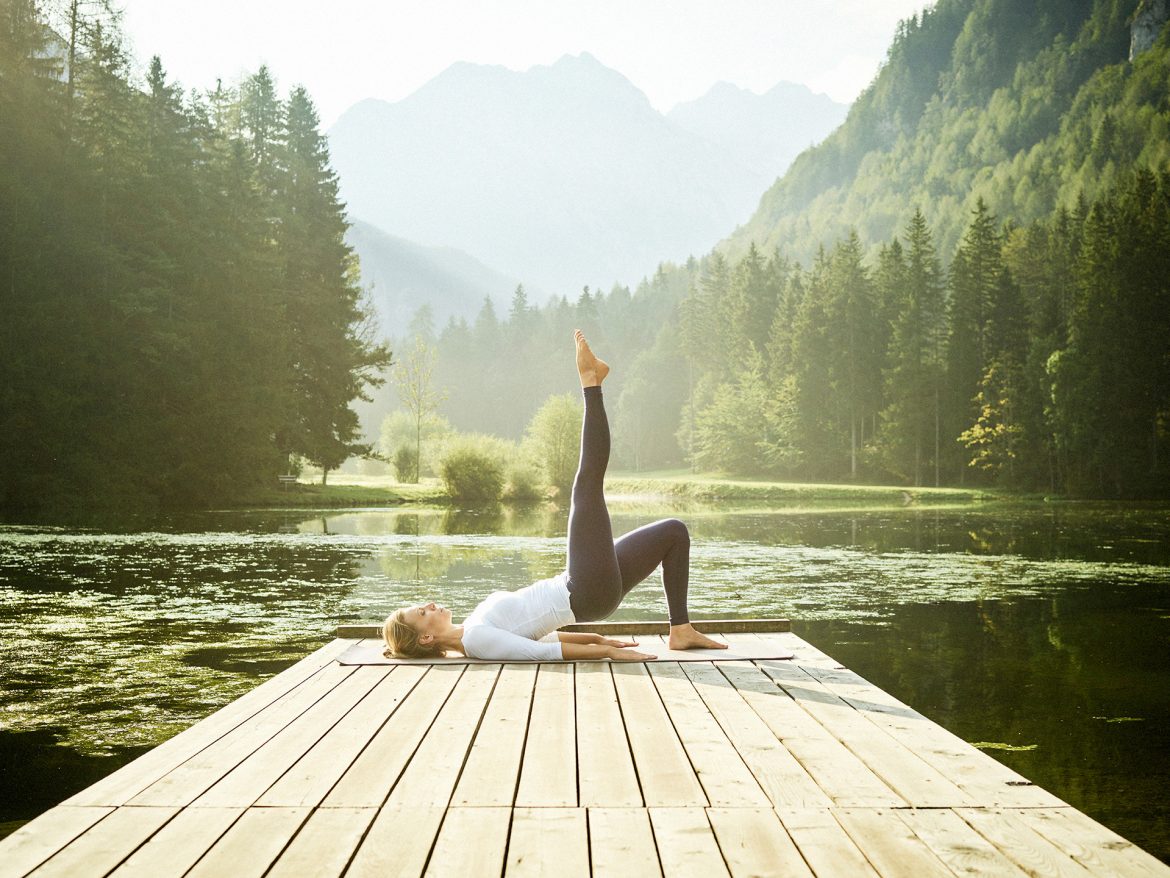
The Pilates Bridge will challenge and enhance your lumbar stability during hip extension and it will strengthen your hip extensors. The purpose of bridging is also a pain-free range of motion in hip extension and the ability to perform an abdominal brace.
Do you sit a lot?
When you sit you are in a hip flexion therefore your goal is to achieve as much hip extension as possible. The Pilates Bridge is the perfect way to start counteracting that.
Do you have low back pain?
The Pilates Bridge will mobilize your low back. This is one of the best exercises to help target low back, abdominals and hip extensors.
Do you want your booty to look better in your jeans?
Dynamic bridging (first part of the video) tightens your gluteals and hamstrings.
Do you have bad posture?
You are probably reading this sitting down, from your computer or mobile and your spine is in flexion, leaning forward. Bridging strengthens and can return proper movement to your spine.
Do you want to improve your balance?
Strengthening the posterior chain will help improve your balance when standing.
Do you want to boost your mood?
With the Pilates Bridge heart is lifted higher than your head and that will increase your blood flow. Increased blood flow can help balance hormones.
How to do it correctly?
Lay down on you back, with knees bent and feet flat on floor. Arms are held by the sides of the body. Engage your core muscles. The movement should be initiated with an abdominal brace and a contraction of the gluteals.
Begin by lifting the hips up towards the ceiling until there is a straight line between the knees and the shoulders. When creating the long line from your shoulders to your knees, be careful that you are not overarching and keep your ribs a little lower than your pelvis to keep your nice, straight line. Return to the start position.
First part of the video shows dynamic bridging. It can be used for beginners or people with injuries and can help get you started with bridging. Dynamic bridging works the muscles of the posterior chain of the body. These include the back extensors, gluteals and hamstrings.
Second part of the video shows advanced modification (and it is not for beginners) where you move your leg in static version of the Pilates Bridge. Static bridging works the stabilizers and transversus abdominis.
To sum up: This exercise develops the strenght of the back of the leg while also challenging the stability through the front of the legs. It encourages us that we know how to hold our pelvis stabilized.
And now, how many bridges did you do between reading this post?
If you would like to know more about smart exercises you will enjoy Corrective Exercises by Kesh Patel.
Next week I’ll post about activation of your core muscles. Many of you probably have heard a lot about core, but you still don’t know if you are engaging it correct.
If you enjoyed this post, I’d be very grateful if you’d help it spread it.
Thank you!
